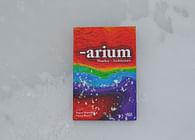
DISTRICTS OF DIFFERENCE
The development of the Scarborough Town District (STC) emerged from generic suburban planning, resulting in the grouping of various fractured districts, with no boundaries or limits. Simultaneously, the STC has the potential to be a major civic node for eastern Toronto - tied to regional infrastructural lines including the highway, rail and major streets. Upon closer examination of the site, the appearance of 'almost' districts appears; shopping, mixed-use, residential, institutional and industrial. Each of these districts contains a clear building type and associated demographic user, but the project of the district was never completed in its entirety, resulting in a site with seemingly no logic and an equally confused network of redundant roads to support this. What if these districts could be clarified and made into legible entities?
A VOID OF POSSIBILITIES
The site of the void within the middle of the site exists and is framed by these various legible districts and is wrapped by infrastructure - an LRT stop, bus drop-off and automobile routes. This void has the potential to be the connective device between the various districts only because of its neutrality. Claimed by no one, it belongs to everyone and forms the definition of the Public Sphere. If all the surface parking and flows of the site were consolidated into this void a new charged center would emerge that links the districts and diverse users of these districts. The transfer station is programmed by its infrastructures of flow. Parking is coupled with soft programmes that take advantage of periods of inactivity. These range from informal markets, theaters, bingo hall, recreational activities, etc. that reaffirm the public spirit of the building. The flows of people and infrastructure come together on a democratic platform of plurality, known as the 'plinthesis'. How could the surrounding districts also plug into the plinthesis and connect to each other as well as the regional network of infrastructure?
LIBERATION OF THE ATRIUM
While typical new urbanism schemes for the suburbs involve a continual attempt of animating the street, in the STC this approach is no longer tenable. In fact, the only 'public' space that seemingly functions on the site is the existing mall - a romanticized version of the street complete with weather control. What if the atrium is the template for connection in the suburban context? Liberated from commercial interests, Atria could be utilized as an internalized network of connectivity. Five atria (mixed-isum, spendarium, higher educatorium, pretensarium, industrarium) connect the various districts internally as well as to the transfer station and its associated infrastructure. These climatically conditioned spaces are liberated to be uncondtionally open to all.
PLINTHESIS
Framing and containing the confluence of flows, the plinthesis is continually charged by the mixed demographics that exist within the site and city. Its neutral form creates a legible figure of connection and allows the atria and infrastructure to connect the local and regional flows. Here, public life is fore grounded and contained, the architecture setting the backdrop of public life.
Status: Competition Entry
Location: Toronto, ON, CA
Firm Role: Project Design Director
Additional Credits: Directors: Neeraj Bhatia, Alexander D'Hooghe, Shelagh McCartney & Francesco Martire
Design Team: Nathan Bortolin, Dave Freedman, Han Liu, Salome Nikuradze, Mahtab Oskuee, Sanford Riley, Kristin Ross, Steven Socha& Celina Yee (phase 2) / Nathaniel Addison, Justin Cheung, Song Deng, Gaston Fernandez, Robert E Fiorino, Andria Ya-Yu Fong, Zachariah Elan Glennon, Meagan Donkin Gumbinger, Darius Gumushdjian, Martin Hogue, Man Yee Stanton Hung, Negar Jazbi, Ada-Nkem Juwah, Zeena Hashim Kammoona & Mandy Allison Wong (phase 1)



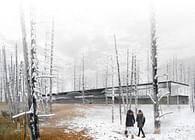



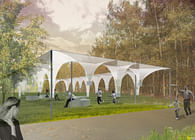
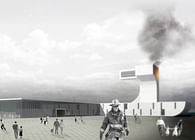


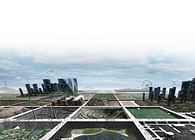

![Bracket [Goes Soft] Bracket [Goes Soft]](https://archinect.gumlet.io/uploads/fh/fhcvzt2j1lysvlgm.jpg?fit=crop&auto=compress%2Cformat&enlarge=true&crop=entropy&w=195&h=140)
